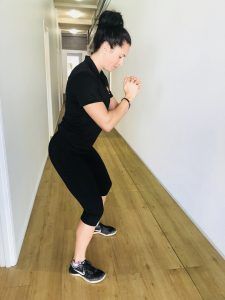
Quite often Glute weakness or imbalance can be the source of many lower limb injuries and performance determinants. However, there are many Glute Exercises available to help amend this issue.
Recent studies have looked at muscle activation during common exercises, they looked at what had the best muscle activation for Gluteus maximus & Gluteus medius.
Your Gluteus maximus is the main extensor of the hip (think pulling your leg towards and past your body) and it is the biggest of the gluteal muscles, sitting on top. It’s the muscle that makes up the bulk of our buttock.
Your Gluteus medius, this is another glute muscle that sits below the crest of your hip around your side, and it helps to abduct (bring the limb away) and rotate the limb inwards. It also is very important in pelvic stability during single limb loading, such as walking & running.
The exercises reviewed within the study were the following:
– Side lying hip abduction
– Clams with 30° hip flexion
– Clams with 60° hip flexion
– Single leg squat
-Single leg deadlift
– Lateral band walk
-Forward lunge
-Sideways lunge
-Transverse lunge
-Forward hop
-Sideways hop
-Transverse hop
The results were
|
Gluteus Maximus activation |
Gluteus Medius activation |
|
Single leg squat |
Side lying hip abduction |
|
Single leg deadlift |
Single leg squat |
|
Transverse lunge |
Lateral band walk |
|
Forward lunge |
Single leg deadlift |
|
Sideways lunge |
Sideways hop |
|
Side lying abduction |
Transverse lunge |
|
Sideways hop |
Transverse hop |
|
Clams with 60° hip flexion |
Forward hop |
|
Transverse hop |
Forward lunge |
|
Forward hop |
Clams with 30° hip flexion |
|
Clams with 30° hip flexion |
Sideways lunge |
|
Lateral band walk |
Clams with 60°hip flexion |
This isn’t to say that the other exercises are without use, as this is only taking into consideration 2 of the many muscles that act on the hip. There are a few exercises missing within the study, namely step-ups, but if we were to look at a good initial rehabilitation for these two muscle groups it would seem single leg squats & side lying hip abductions would be best. If we were to continue our progressions, its significantly easier to load up a single leg squat vs a side lying hip abduction, so even though a side lying hip abduction may have better activation, overall it will fall behind with loading.
So while this is a good overview there are still considerations when it comes to exercise prescription such as limiting joints range of motion, balance, flexibility and previous or current injuries.
Exercise Physiologist Callum Morrison.
Learn more on how Callum can assist your strength today.


